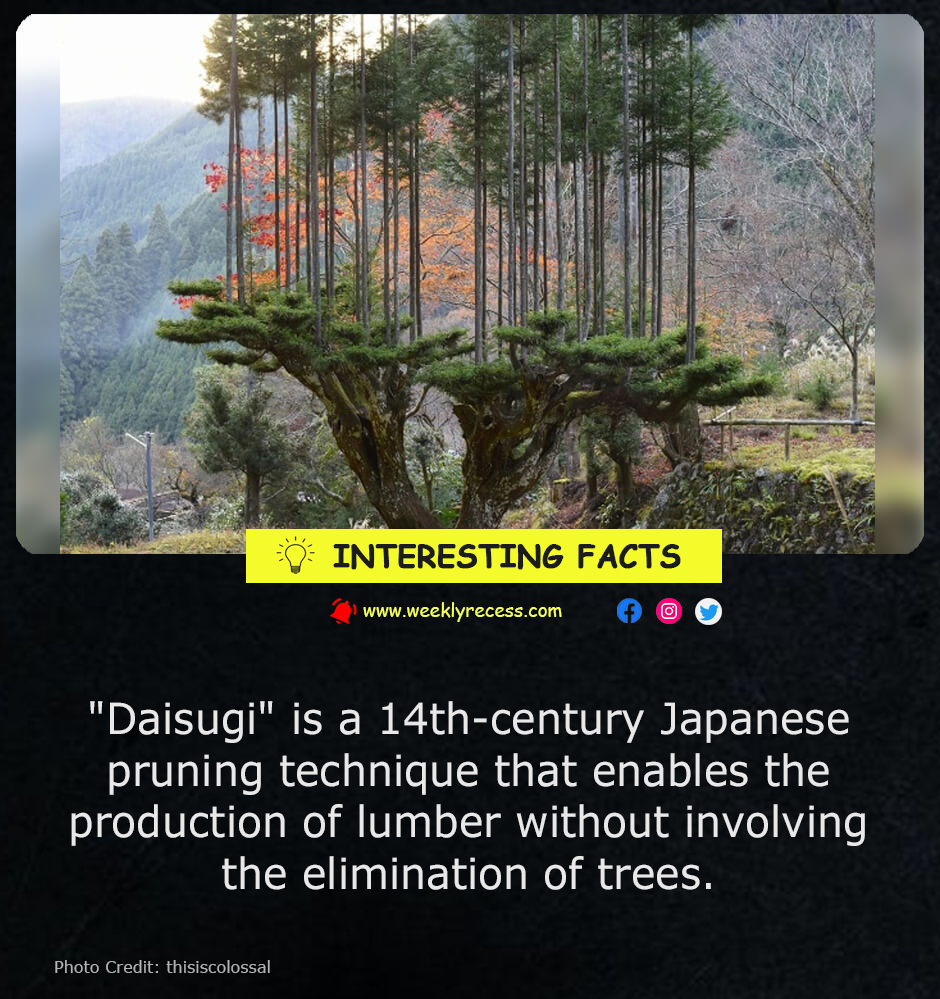

Daisugi: The Ancient Japanese Art of Harvesting Wood Without Cutting Down Trees
Originating in 14th-century Japan, Daisugi is a remarkable forestry technique that allows for the sustainable harvesting of wood without felling trees. Developed by Kyoto gardeners and foresters during the Muromachi period, this method involves meticulously pruning a cedar tree so that it grows perfectly vertical, bonsai-like shoots from its main trunk. These shoots are later harvested as straight, uniform lumber, ideal for traditional Japanese architecture and furniture-making. The beauty of Daisugi lies in its harmony with nature—the parent tree remains alive and can continuously produce new shoots for decades. This ancient practice not only showcases Japan’s deep respect for natural resources but also offers a timeless lesson in sustainable living that feels incredibly relevant in today’s age of deforestation and climate concern.

A massive flamingo sculpture at Tampa Airport creates a surreal underwater illusion.

A Congolese tradition forbids couples from smiling on their wedding day to show commitment and respect

In Churchill, unlocked cars offer emergency shelter from unexpected polar bear encounters.

Built in 312 BC, this Roman road has stood the test of time.

Snow gum trees reveal colorful bark streaks as outer layers peel and oxidize at different stages.






